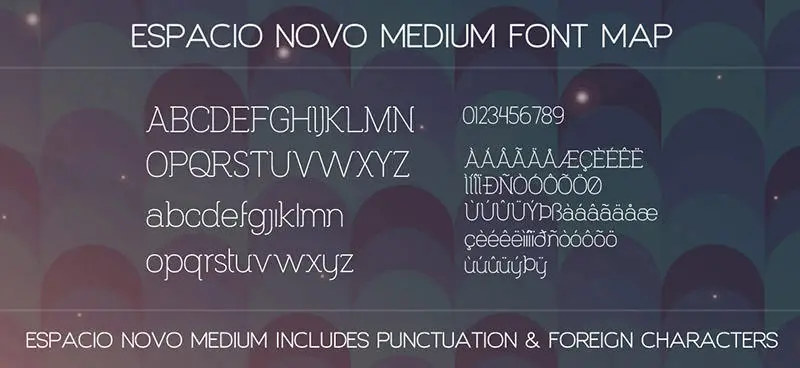IoT Fleet Management- An emerging term in the logistics and transportation Industry.
It’s amazing to know that last year the IoT fleet market was worth 8.28 Billion USD. The driving force behind this is the increasing demand for the logistics business to make faster movements.
Also, today, most logistics and transportation industries are finding smarter ways to decrease their fuel and maintenance costs by increasing efficiency.
Thankfully, With the introduction of IoT fleet management it has been observed that things have been taking a faster momentum in the logistics industry.
And the changes have started taking place, for instance, let’s take the example of J.R company, Austria.
The company has been active in delivery services; they too were concerned about making faster movements of logistics.
Based on their analysis more time was consumed in delivering items to the desired location. After much research, they thought about integrating IoT fleet solutions in their management system.
Surprisingly, with the IoT fleet monitoring, they organized the tours, saved a few kilometers on the road, and made insane savings.
As per their testimonial,
The amount of vehicle maintenance has a lot to do with the driver’s behaviour.
Drivers wasted a lot of time during their commutation. For instance, after delivering an item they would roam around.
Well, the company couldn’t track their halts and thus there was a pile of workload.
Interestingly, implementing IoT tracking software has a cost reduction of upto 50%. Maintenance costs include cornering, tire brakes, and so on!!!
As a matter of fact, they had an annual cost reduction of upto 10%. Imagine, by integrating IoT and fleet management, you can have lucrative benefits. Also, the warehouse management system is proved beneficial for them.
But before let’s understand, what is the sole purpose of IoT fleet management solutions?
We will give you a step-by-step understanding of how integrating IoT fleet management solutions can work on your logistics business.
We will start by understanding the basic terms. Then we will look at how these technologies can work in your existing operations or integrate these technologies in your new business ventures.
What is Fleet Management?
Did you know that 75 % of fleet managers rely on fleet management software or vehicle telematics to support their day-to-day operations?
Many organizations operate commercial vehicles to engage in some form of fleet operations. The primary purpose of fleet management is to oversee all fleet performance and maintenance to increase productivity and aid in running a business as smoothly as possible.
In simple terms, fleet management is about keeping the fleets moving. Efficiency, Time, and Budget are significant constraints of any logistics business. And fleet management solutions provide the same benefits to the business.
With fleet management, the business is taking the road to new dimensions. Well, the figures seem promising!
Majorly, the enterprise fleet management software monitors the fleet activities and aid managers in making decisions. The reports are generated through vehicle tracking, fuel consumption, monitoring driver behavior, and timely vehicle maintenance management.
Now, you would be thinking, what is the role of IoT in fleet management system, right?
Let’s get this straight!
Role of IoT in Fleet Management
Your goals, your company & your fleet- managed well!
IoT solutions take the fleet management process to the next level. An IoT-enabled fleet management solution helps businesses to gain competitive benefits simply by automating the process in a cloud-based platform.
Hence, IoT fleet management provides real-time visibility to everything on the field.
A logistics company can have complete control over the operations. No, it isn’t just a GPS that would inform you about the locations of your fleets.
Here are some significant advantages of integrating IoT in fleet management software.
Advantages of IoT in fleet management?
Maintenance
Fleet management using IoT brings a beautiful way to reduce your maintenance cost by 50 %
Amazingly, these integrated IoT sensors beforehand detect the faults in the system either these are mechanical, or any parts require precise routine maintenance.
Of course, the fleet tracking in IoT is so precise that a fleet manager can detect the system’s issue and quickly solve it.
Driver Performance
When one is operating in the logistics and transportation business, the onus of the safety of drivers is your responsibility.
The fleet management with IoT gives you accurate driver’s speeding, harsh braking, and aggressive drivers.
So, next time the driver is driving harshly, you can address the issues immediately.
Routing and Tracking
Need to deliver a parcel urgently?
With Iot fleet management, it becomes so seamless. Yes, the IoT data aids you in giving a comprehensive view and near real-time visibility of fleet activity.
So, now you can know the location of your fleets and can guide them to a route that is the fastest and safest for their journey, that too with the minimum cost.
Fuel Efficiency
Sometimes while managing your fleets, you might wonder if you wish to get the exact fuel consumption data.
Thankfully, with the IoT sensors, your wish would be fulfilled. That’s why many businesses are satisfied after integrating IoT fleet management solutions. All that seemed impossible before now has become possible.
Now one can easily track where the fuel consumption is maximum, and of course, the fleet managers can plan better.
A crystal clear picture!
A fleet manager can see a real-time window of the vehicle’s fuel consumption and expenditures. Moreover, they can eliminate the unauthorized operation cost and know the unwanted delay caused by the drivers, which increases the fuel cost.
We may say that soon all the logistics and transportation business will adapt to these technologies as it provides you with an array of benefits.
When you study IoT fleet management, one term that comes across several times is ‘Telemetcis.’
Well, let’s get your concepts clear by understanding the core difference between IoT and telematics.
You May Also Like
- Apps & Software, Product Engineering
Difference Between IoT and Telematics?
Did you know that 75% of fleet managers rely on fleet IoT management software or vehicle sales management solutions to support their day-to-day operations?
Let’s first understand the role of telematics in fleet management.
Gartner defines telematics as ‘refers to the use of wireless devices and ‘black box’ technology to transmit data back to an organization in real-time.’
Too techy?
In simpler terms, telematics is collecting, transmitting, and processing data from real-world machines like trucks, trails, and other assets that refer to commercial fleet solutions and providing the data to the fleet managers.
Hence, the telematics software collects and sends commands to the vehicles. Vice versa, it provides the data to fleet managers about the whereabouts of their fleets and gives in-depth analysis.
When it comes to IoT (Internet of Things), it is described as physical objects embedded in sensors.
So in a way, the IoT and telematics go hand-in-hand.
Requirements of Fleet Management Technology
Suppose you are into the fleet management business or thinking of getting into one. In that case, it’s necessary to update yourself with the basics of integrating fleet management technology into your business or building an IoT fleet management app.
Hardware Requirements
Mobile Phone
To get a precise location of the fleets, tracking them through mobile phones is essential. With a mobile device, you can track your fleets from anywhere in the world.
GPS Tracker
After implementing IoT fleet management solutions into your business, the fleet managers were less worried about theft issues.
A GPS tracker aids you in giving real-time information about a vehicle’s location. Moreover, it would give you information on your driver’s speed and more. For instance, you can track your driving habits too.
Also, in GPS, there are different sensors to guide you about the vehicle’s health. You can add a TPMS (Tyre Pressure Monitoring System), which will read the air pressure data of the tire and give feedback to the user when it is below a specific limit.
Software Requirements
Well, one can use any server while developing IoT fleet management solutions, but we will talk about the two main servers that are prevalent in the market.
NGINX Server:
NGINX is an open source software that configures powerful load balancers. It runs multiple applications with different languages and frameworks. For example, Twitter.
Another significant aspect of the NGINX software is that it can handle a large number of requests with a bare minimum amount of resources.
Digital Ocean Server:
Digital ocean server or ‘droplets’ is a type of cloud server designed to store large-scale server data, and it makes data management easy and yet cost-effective. The Digital Ocean server uses KVM as a hypervisor, which can also be built in various sizes.
RabbitMQ:
RabbitMQ is an open-source message broker software. Its main work is to accept messages from the sender or producer and deliver them to the consumers.
The platform for RabbitMQ stands for keeping your messages safe until it is received by the consumers.
Why RabbitMQ?
In simple terms, if the user adds entries from the server multiple times in the database, it will lock itself. To eliminate these things from happening in your software, developers use rabbitMQ. Here the server stores the information until the receiving end server connects and takes off the message from the queue.
Therefore, one can store bulk information in the database.
Database:
For storing the collected data from the fleet’s tracking devices, we can use any of these two databases.
Socket connection:
Socket Connection is the central server component that communicates with the tracking units. Well, it’s a vital component of the fleet management system. The best thing about its socket connection server is that it can communicate with multiple clients using multiple threads. It establishes a TCP/IP socket connection with the remote hardware units.
When one connects the GPS, the server will receive information from the device.
Mapping Systems:
We will use any of these two mapping systems to map the data, which is the leading software component of the fleet management system.
How to Find the Best IoT Fleet Management Solutions?
To incorporate fleet management in your organization, you need to trust the IoT software development company experts that understand your fleet business requirements.
Instead of forcefully fitting IoT fleet tracking solutions into your management, they build a customized IoT fleet management that fits your business goals.
We are among the leading Fleet Management Software Development Companies that help you maximize productivity, reduce costs, and reach your corporate fleet management goals.
Talk to our maestro developer, and they will guide you according to your business requirements.
Source link








Leave a Reply